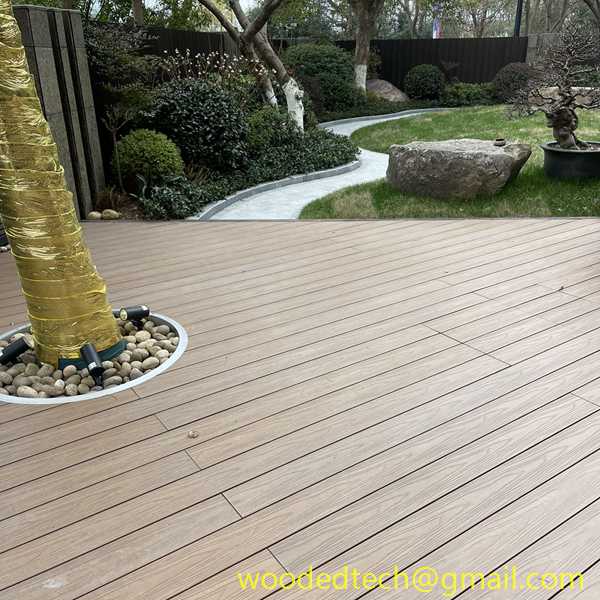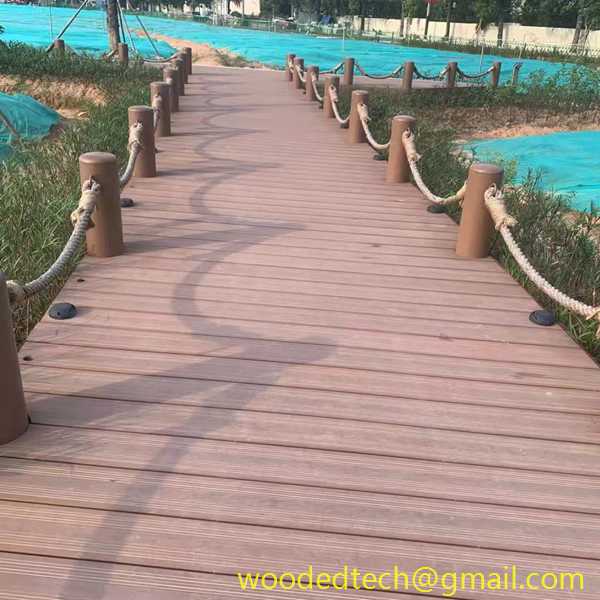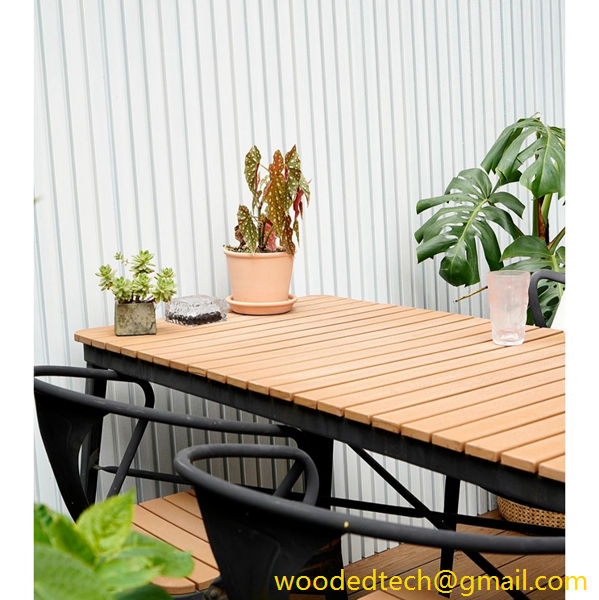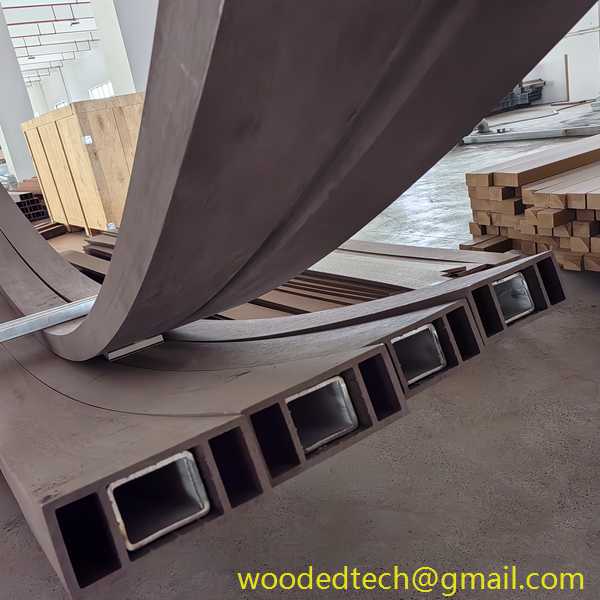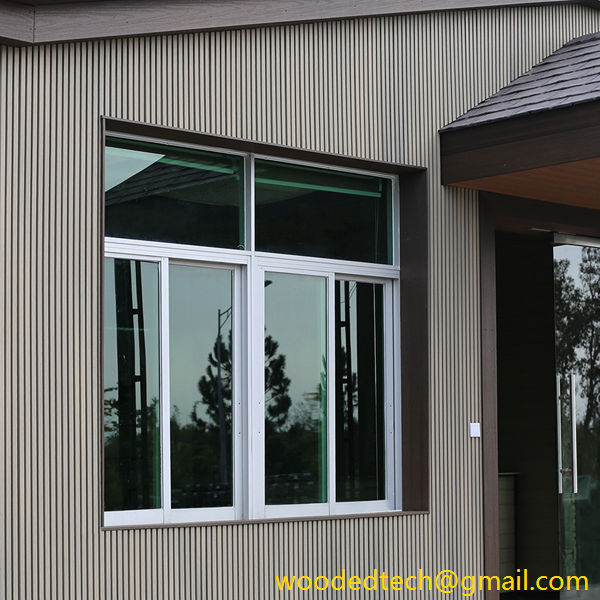Composite decking, as a new favorite of outdoor decoration, has won wide favor for its environmental protection, waterproof and wear-resistant characteristics.
However, whether composite decking will fade has always been the focus of consumers.
Today, let’s discuss this issue.
The raw materials of composite decking are mainly wood powder and HDPE plastic. Through technical control, both of them are not easy to change color too much in the natural environment. Therefore, from the material point of view, composite decking has good anti-fading performance.
However, any material will have a certain degree of color change under long-term ultraviolet radiation, and composite decking is no exception.
However, compared with ordinary wood, the color change of composite decking is much smaller.

Anti-ultraviolet ingredients are added to composite decking during the production process to further improve its anti-fading ability.
At the same time, surface protection treatment can also effectively reduce the impact of ultraviolet rays on the color of the floor and extend the service life of the floor.
Correct use and maintenance are also the key to maintaining the color of composite decking.
Avoiding long-term water immersion and chemical corrosion, and regular cleaning can make the color of composite decking more durable.
In addition, the mature co-extruded composite decking developed in recent years has better technology and better anti-fading ability due to the co-extruded functional plastic layer.
Does composite decking fade?
Although composite decking will have slight color changes after long-term use, its anti-fading performance is significantly better than other materials.
If you are looking for an outdoor floor that is both environmentally friendly, durable, and not easy to fade, then composite decking is undoubtedly your best choice.

